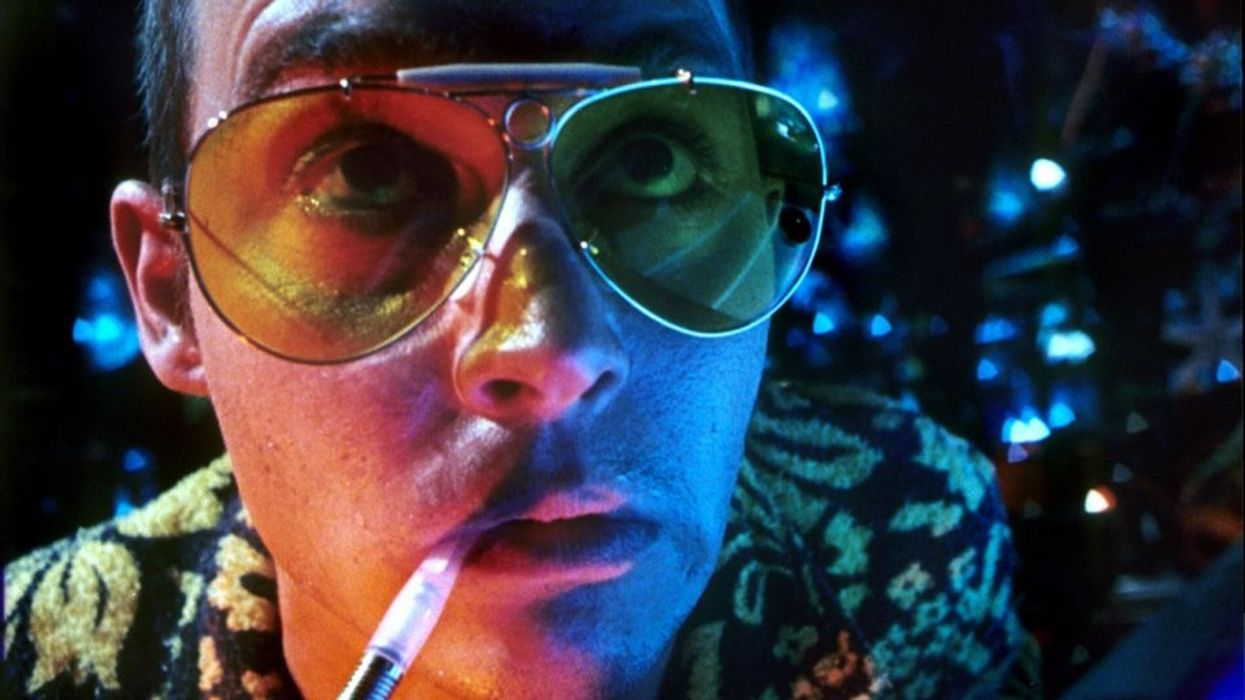Watch: How 'Fear and Loathing' Points Out the Cinematic Challenges of Adaptation
Terry Gilliam's adaptation of 'Fear and Loathing in Las Vegas' translates the novel's psychedelic prose into striking visuals.

As this essay from Daniel Netzel and Film Radar points out, Hunter S. Thompson's Fear and Loathing in Las Vegas: A Savage Journey to the Heart of the American Dream is not, at first glance, the sort of novel one would think easy to adapt. Though the novel is critically acclaimed and has even been hailed as a classic by American masters like Cormac McCarthy, on its release, Terry Gilliam's 1998 adaptation of the 1971 novel was called, "pointless...repetitive," and in the words of one critic, "one long offensive treatise on just how vile two human beings can be."
Netzel notes that the film is, by and large, a faithful adaptation of the novel, and in the video below looks at why "what people seem to love so much about the original work was exactly what people seemed to deride in the film."
The issues inherent in adapting a novel are among the most thorny in all of filmmaking. Stanley Kubrick, whose filmography is comprised almost solely of adaptations, wrote an essay on the subject in which he said, "The perfect novel from which to make a movie is, I think, not the novel of action but, on the contrary, the novel which is mainly concerned with the inner life of its characters." To Kubrick's mind, the job of the adaptor was to come up with action that could serve as the "objective correlative of the book's psychological content [and] accurately dramatize this in an implicit, off-the-nose way without resorting to having the actors deliver literal statements of meaning."
In Fear and Loathing, much of the action is centered around the drug-induced states achieved by Dr. Gonzo and his attorney, and Gilliam, one of cinema's most irreverent visual stylists, spent much of his time working on how to accurately visualize these states. In a long piece for American Cinematographer, cinematographer Nicola Pecorini discusses how they went about filming these states, from ether ("loose depth of field; everything becomes non-defined"):
To mescaline, ("colors melt into each other, flares with no sources, play with color temperatures"), and of course, acid:
The fidelity with which the filmmakers approached the chemically-altered consciousness of the characters does point out an issue that the film has: The drugged states described in the novel almost demand cinematic treatment in an adaptation, and while they get it, they aren't used in furtherance of much of a story, for the simple reason that while Fear and Loathing has a surfeit of incident, what it doesn't have is much of is a "story" (i.e., there is very little character growth/change etc.)
And yet, for a film without a story, there is almost wall-to-wall narration. Thompson's prose is at the very heart of the book's greatness, and without it, an adaptation of Fear and Loathing wouldn't have much of a point.
This isn't to knock the film at all, but it does, I think, point out how this particular novel was a problematic adaptation to make. What we end up with in the film version of Fear and Loathing (at least some of the time) is a skillfully executed and expertly narrated slideshow version of the Inferno, which, while a visual masterpiece and a bravura piece of filmmaking, could easily leave some viewers cold.
One has to give massive kudos to Gilliam for not watering down the book's content and crafting such a sedulous and painstaking visual experience. It almost feels like this is a movie that would be almost impossible to adapt into a "movie" without changing the very heart of the book. But then, Terry Gilliam isn't an easy filmmaker and this isn't an easy film. Netzel's video is an eloquent discussion of many of the issues (the death of the American Dream, the myths of the 1960s) raised by the book and movie, and the question of adaptation as a whole.
Source: Film Radar











